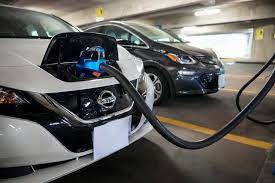The use of electric vehicles has increased in recent years as the world looks to reduce carbon emissions. Electric vehicles reduce oil dependence and carbon pollution, while reducing the amount of harmful pollutants, such as particulate matter and ozone. As a result, there are national plans to reduce carbon pollution from motor vehicles, which account for 17 percent of global emissions. But what is the future for electric vehicles? The following are the key drivers for their adoption.
Initially, electric vehicles (EVs) will be expensive and limited in range. The lack of public charging stations could discourage American consumers from making the switch. However, a strong infrastructure could reduce range anxiety and encourage more people to make the switch. The next critical piece in electrification is battery technology. More advanced batteries can hold more energy and occupy less space, allowing EVs to be smaller and lighter. With the help of advanced batteries, EVs will be able to travel further on one charge.
Although many legacy carmakers have announced plans to introduce electric-only models, other automakers are also preparing for EV adoption. Startup EV makers are also emerging, and some are already proving themselves. EVs could soon replace gasoline-powered vehicles in many sectors, from construction to transportation. Ultimately, the world’s roads will be cleaner, and more affordable. That said, the future of electric vehicles will probably be far from predictable.
With EV adoption continuing to grow, governments and consumers are becoming increasingly interested in EVs. Many EV manufacturers are pursuing low-emission models, and consumers are demanding cleaner cars. Even if the price premium is high for EVs right now, the total cost of ownership is likely to fall lower over time. As EVs become more widely used, the government hopes to reduce the cost of EVs and lower emissions.
While COVID-19 may slow down EV sales, the overall outlook is positive. Deloitte analyzed the most recent indicators to project the global EV market over the next decade. By 2030, BEVs will outperform PHEVs globally, reaching 5.8 million units. During this time, ICE vehicles will recover from the effects of COVID-19, and then slowly decline in market penetration.
EVs also represent a decentralized energy resource. They can provide a decentralized source of electricity and storage, which improves the overall stability of energy systems. With more electrified vehicles on the road, energy players are betting big on EVs as a flexible source of electricity. In Denmark, Enel recently set up the first commercial vehicle-to-grid hub and sold its frequency-regulation services to the transmission system operator for EUR1,500 per year.
While charging time varies by location, public charging infrastructure has numerous benefits. Many EV charging stations now offer embedded billing and smartphone apps, making it easier for EV drivers to use them without delays. Furthermore, battery charging speeds and capacity are improving, and the ultimate goal of these charging stations is to be faster than gas stations. So what is the future of electric vehicles? And how will it affect us in the future? Let’s take a closer look.
